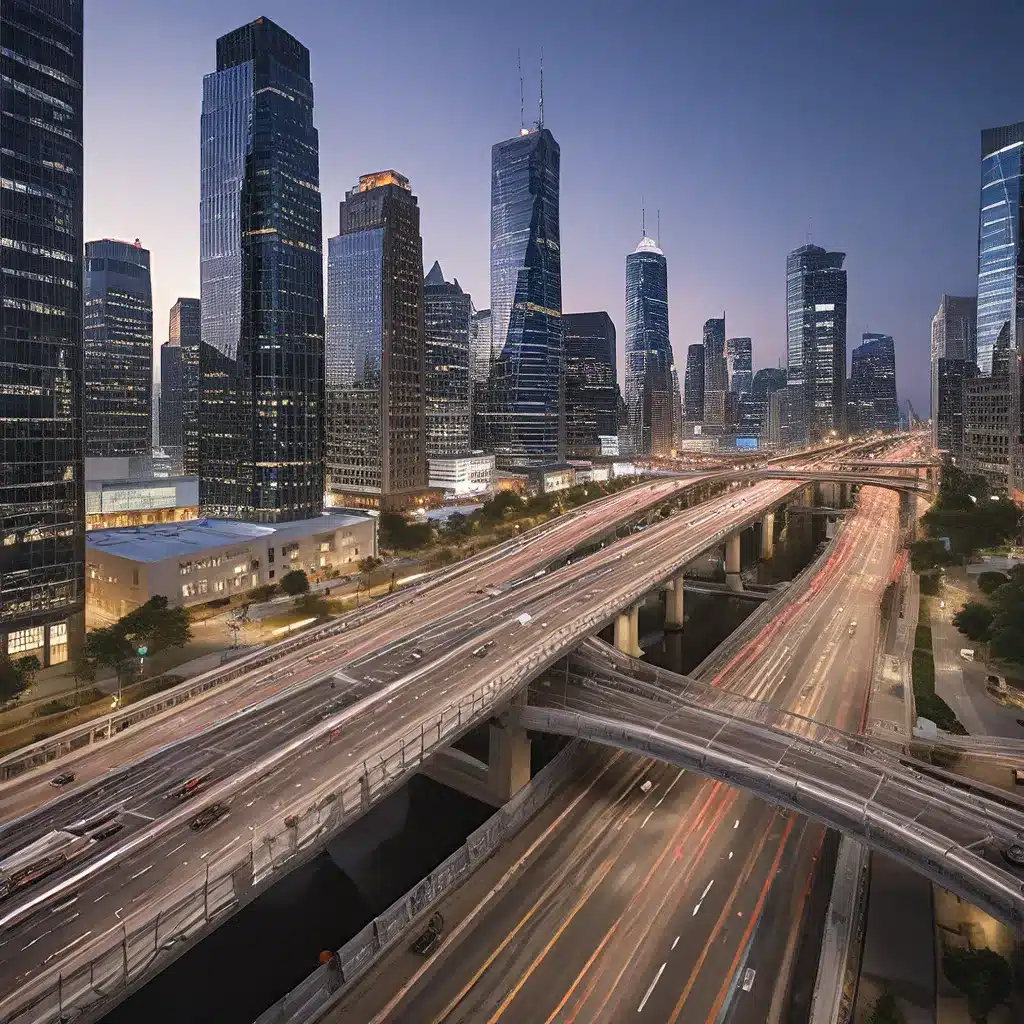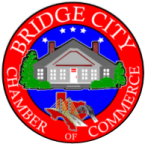
Unveiling the Future: Bridge City’s Digital Transformation
Ah, Bridge City – where the pavement meets the possible, and the streets hum with the promise of a smarter tomorrow. As I wander through this bustling metropolis, I can’t help but marvel at the way technology has seamlessly woven itself into the fabric of daily life. It’s as if the city itself has been imbued with a sixth sense, a keen awareness that is redefining the very concept of urban living.
Bridging the Gap: Unlocking the Power of Smart Technology
Not too long ago, city leaders viewed smart technologies as little more than tools for boosting efficiency behind the scenes. But oh, how times have changed! These days, the digital revolution is taking center stage, with smartphones becoming the proverbial keys to the city. Instant access to information about transit, traffic, health services, safety alerts, and community news – it’s all at our fingertips, ready to be tapped into at a moment’s notice.
Transforming the Urban Landscape: Enhancing Quality of Life
But this smart city evolution is about so much more than just streamlining operations or digitizing processes. It’s about using technology and data purposefully to improve the very quality of life for the people who call Bridge City home. After all, what good are all those shiny new gadgets if they don’t translate into tangible benefits for the residents?
According to the latest report from the McKinsey Global Institute, smart city applications have the potential to improve key quality-of-life indicators by a staggering 10 to 30 percent. Think fewer crime incidents, shorter commutes, reduced health burdens, and a smaller carbon footprint. It’s a veritable smorgasbord of improvements just waiting to be served up to the people of Bridge City.
Layers of Innovation: Uncovering the Smart City Ecosystem
But how, exactly, does this digital transformation take shape? Well, it’s a bit like a layered cake – with each component playing a vital role in the overall flavor. First, you’ve got the technology base, the critical mass of smartphones, sensors, and high-speed communication networks that form the foundation. Then comes the second layer: the applications themselves, the tools that translate raw data into actionable insights and tangible solutions.
And finally, the third layer – the one that really makes the whole thing come alive – is the widespread adoption and usage by the city, its businesses, and the public. Because let’s face it, no matter how fancy the technology, if people don’t embrace it, it’s all for naught.
Safeguarding the City: Smart Solutions for Public Safety
Take public safety, for example. Technology may not be a silver bullet for crime, but it sure can help agencies deploy their resources more effectively. Real-time crime mapping and predictive policing techniques are already making waves in Bridge City, using data to anticipate and prevent incidents before they even occur. And when emergencies do happen, smart systems can optimize call centers and emergency response, potentially shaving off crucial minutes from the time it takes for first responders to reach the scene.
But the key is striking the right balance – leveraging the power of data-driven policing while ensuring that civil liberties are protected and that certain neighborhoods or demographics aren’t unfairly targeted. After all, in a smart city, we’re all in this together.
Easing the Commute: Unclogging the Arteries of Bridge City
And what about those infuriating daily commutes? You know the ones – where you spend more time in traffic than you do at your actual job. Well, Bridge City is determined to put an end to that particular brand of urban torture. By 2025, the city aims to cut commute times by a whopping 15 to 20 percent on average, with some residents enjoying even larger reductions.
How, you ask? Well, it’s all about harnessing the power of smart mobility solutions. Imagine real-time traffic information beamed straight to your smartphone, helping you avoid gridlock and find the fastest route. Or picture a seamless, IoT-enabled public transit system that keeps buses and trains running like a well-oiled machine. It’s a commuter’s dream come true!
Promoting Healthier Living: Tech-Powered Wellness in Bridge City
But smart city solutions aren’t just about getting from point A to point B – they’re also about helping residents live healthier, more fulfilling lives. After all, what good is a faster commute if you’re too sick to enjoy it? That’s why Bridge City is investing in a range of digital health applications, from remote patient monitoring systems to targeted public health interventions.
According to the McKinsey Global Institute, these smart health solutions have the potential to reduce the overall disease burden in high-income cities by more than 4 percent. And in developing cities with high infant mortality rates, data-driven maternal and child health programs could slash those devastating numbers by a staggering 5 percent.
Breathing Easier: Smart Solutions for Urban Sustainability
Of course, a healthy city isn’t just about the well-being of its residents – it’s also about the environment. And as Bridge City continues to grow and evolve, the need to address pressing environmental challenges has never been more pressing. Fortunately, the smart city revolution is here to lend a hand (or a sensor, as the case may be).
From building automation systems and dynamic electricity pricing to cutting-edge mobility solutions, Bridge City is harnessing the power of technology to reduce emissions, conserve water, and cut down on waste. According to the McKinsey Global Institute, this multifaceted approach could lead to a 10 to 15 percent reduction in overall emissions, a 15 percent drop in water consumption, and a 10 to 20 percent decrease in solid waste per capita.
Fostering Community: Digital Connections for a Tighter-Knit Bridge City
But smart city solutions aren’t just about the nuts and bolts of infrastructure and service delivery. They’re also about cultivating a stronger sense of community and civic engagement. After all, what good is a more efficient, livable city if the people who call it home don’t feel connected to one another or to their local government?
That’s why Bridge City is investing in digital channels for two-way communication between residents and city officials, as well as online platforms that facilitate real-world interactions. According to the McKinsey report, these kinds of applications could nearly double the share of residents who feel connected to their local community and triple the share who feel connected to their local government. Imagine the power of an engaged, empowered citizenry working hand-in-hand with their city leaders to shape the future of Bridge City.
Embracing the Future: Empowering Residents to Co-Create the Smart City
And that, my friends, is the true magic of a smart city – it’s not just about the technology, but about the people who wield it. Because at the end of the day, Bridge City’s transformation isn’t something that’s being done to its residents, but rather something they’re actively shaping and co-creating.
Whether it’s a participatory budgeting process that puts the power of the purse in the hands of the people or a network of digital citizen-engagement platforms that amplify the voices of the community, Bridge City is empowering its residents to take an active role in designing the future of their city. And that, to me, is the true mark of a smart city – one that puts people first, using technology as a tool to enhance quality of life, not as an end in itself.
So, as I wander the streets of Bridge City, I can’t help but feel a sense of excitement and optimism for what the future holds. This is a city that’s not just embracing the smart city revolution, but leading the charge – one innovative solution, one engaged citizen, one enhanced quality of life at a time. And I, for one, can’t wait to see what Bridge City has in store.


